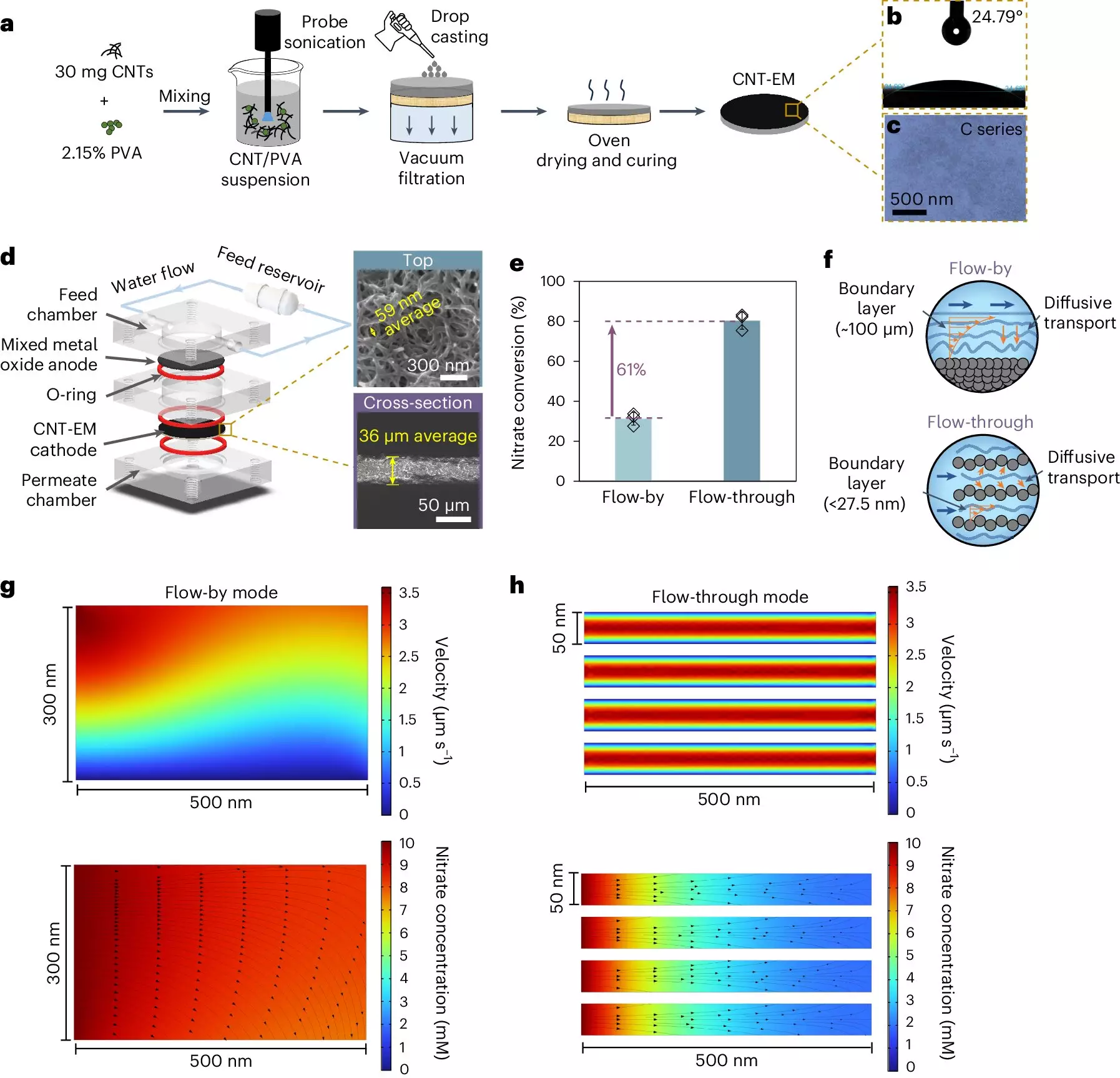Nitrate contamination in freshwater systems poses a significant risk to both environmental and human health. As agricultural practices intensify and urbanization expands, the likelihood of harmful nitrates infiltrating drinking water sources escalates. Nitrates, often originating from fertilizers, industrial waste, and sewage, can lead to serious health issues such as methemoglobinemia, or “blue baby syndrome,” as well as contribute to widespread algal blooms that devastate aquatic ecosystems. The urgency of addressing nitrate pollution is undeniable, beckoning innovative solutions that transcend traditional remediation methods.
Innovative Solutions: A Leap Forward
Recently, researchers at Yale University, spearheaded by Lea Winter, have unveiled a promising advancement in nitrate removal technology. By harnessing electrified membranes composed of carbon nanotubes, the team aims to cut through the complexities and limitations of existing nitrate removal strategies. Most current methods typically focus on isolating nitrates, leading to the production of concentrated waste streams that ultimately return to the environment. This focus on separation rather than destruction is where Winter’s approach diverges significantly. She emphasizes that effectively degrading nitrates is pivotal in preventing these harmful compounds from re-entering our water systems.
Comparing Methods: Destruction Over Separation
Traditionally, biological denitrification processes used in wastewater treatment facilities emphasize using microbes to break down nitrates. However, the reliance on these biological systems comes with notable drawbacks. These processes are often fragile and sensitive to changes in pH, cell content, or temperature, factors that can disrupt entire operations, making them slow and inefficient. In stark contrast, the electrocatalytic processes that Winter’s team advocates provide a more controllable environment, allowing for rapid nitrate destruction without the burdens of concentrated waste.
Electrified Membranes: A Game Changer
The core innovation lies in the electrified membranes with carbon nanotube elements that Winter’s lab is developing. Unlike conventional electrochemical systems that employ flat plate electrodes, these specialized membranes enhance the movement of nitrate ions by significantly minimizing the “boundary layer” that often hinders reaction efficiency. In traditional setups, the fluid closest to the electrode, known as the boundary layer, is around 100 micrometers thick. However, Winter’s membranes reduce this to approximately 50 nanometers. This substantial difference means that nitrate ions can more readily access the electrode surface, accelerating the reaction rates dramatically.
This revolutionary development pivots away from traditional metallic catalysts, often needed for nitrate conversion, towards a carbon nanotube-based system. Not only does this minimize material costs, but it also opens up the potential for more sustainable practices in water treatment technologies.
Speed and Efficiency: A New Standard
One of the standout features of Winter’s approach is its impressive speed. While conventional electrochemical processes can take hours to remove significant amounts of nitrates, her system achieves an astonishing 80% reduction in merely 15 seconds. This dramatic reduction in processing time not only improves efficiency but fundamentally alters expectations in water treatment processes. By diminishing reaction times, this technology can potentially treat large volumes of contaminated water quickly, addressing public health concerns more effectively than ever before.
Real-World Testing: Bridging Theory and Application
To further explore the practical applications of this fascinating technology, Winter’s team conducted real-world tests by sourcing water from Lake Wintergreen. They introduced a modest quantity of nitrate to simulate typical levels found in contaminated waters. The trials aimed to validate the system’s efficacy with real-world nitrate concentrations—an essential step in translating laboratory success to field application.
The results so far suggest that this technology not only scales efficiently but also aligns closely with what is often present in the environment, offering a potential lifeline for communities grappling with nitrate pollution.
The Future of Water Purification
Lea Winter’s research brings forth a groundbreaking methodology that could redefine drinking water purification strategies globally. The use of electrified carbon nanotube membranes heralds a new era wherein rapid and effective nitrate removal can become the standard rather than the exception. As we confront looming water quality crises affected by agricultural runoff and urban waste, such innovations are not just hopeful—they are essential. The fight against nitrate contamination is no longer just about managing waste streams but transforming how we engage with and protect our vital water resources.

